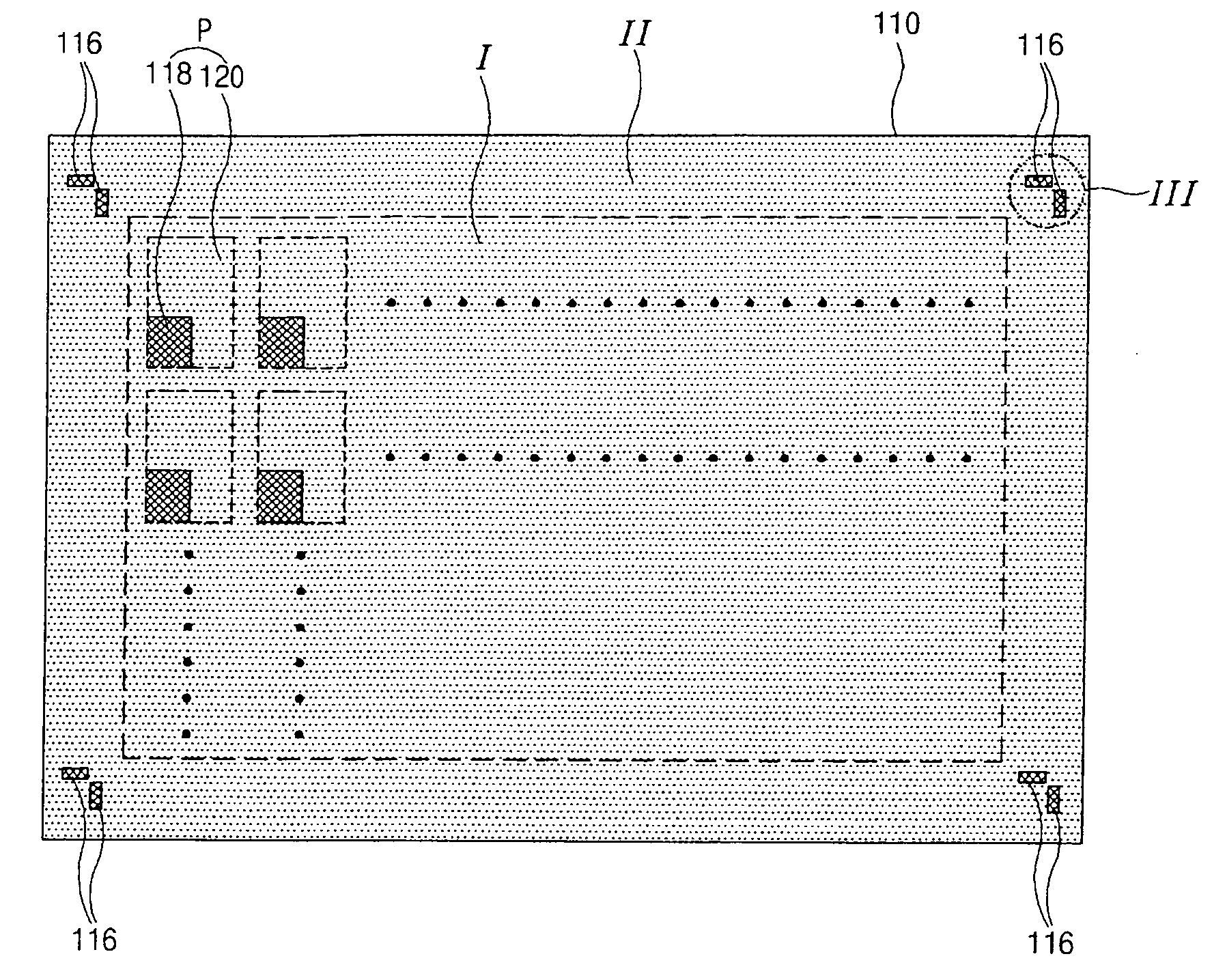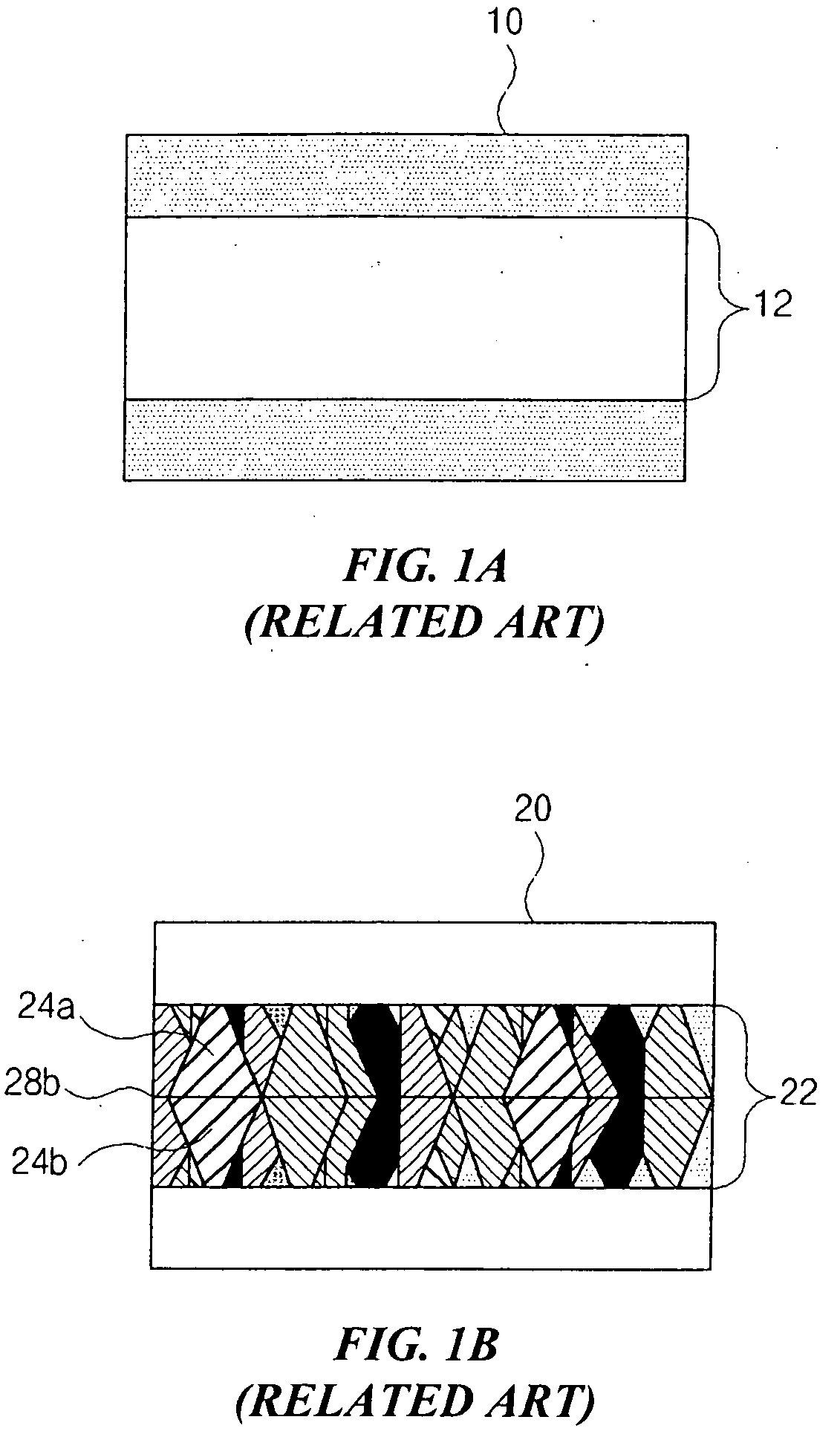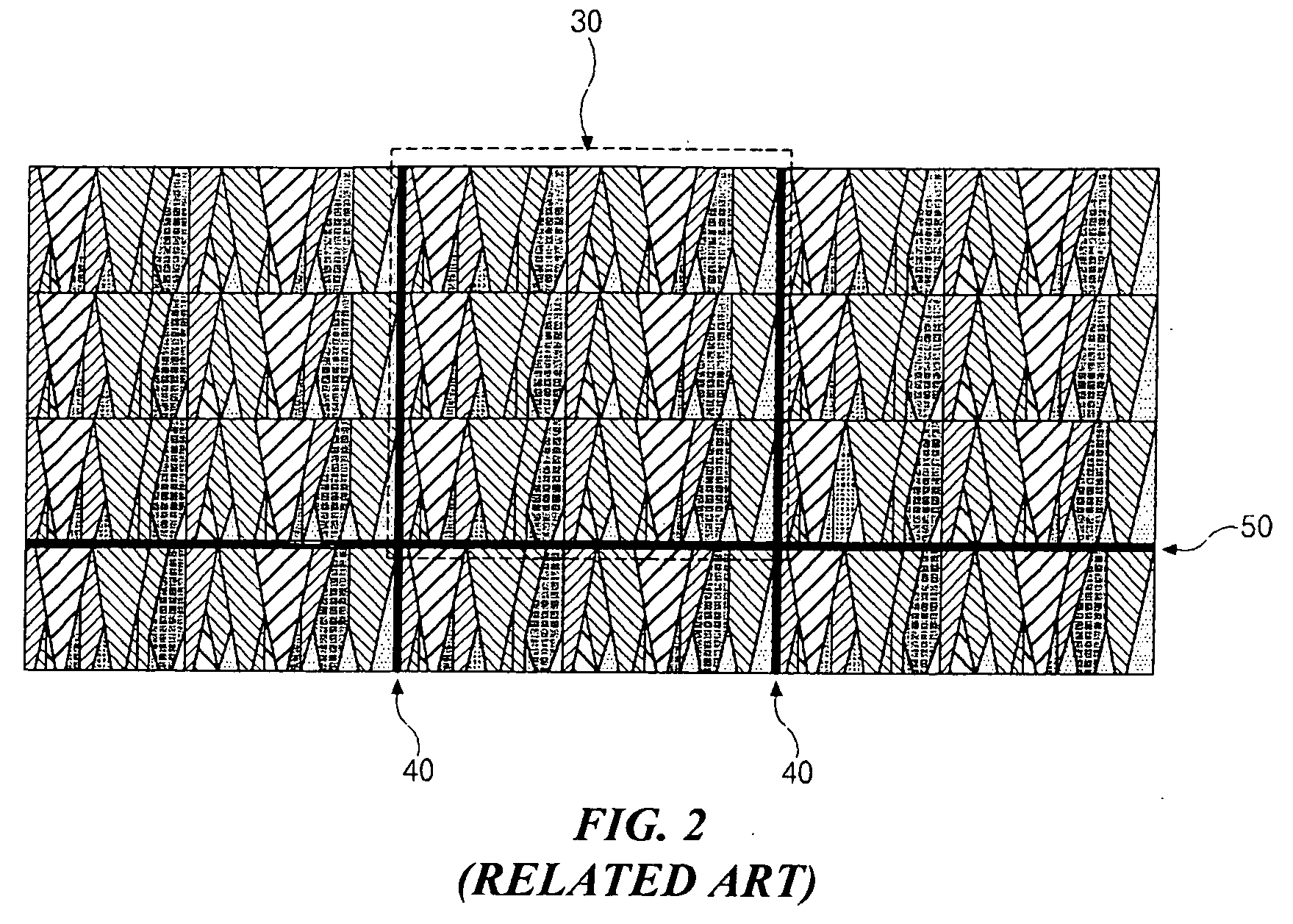Method of fabricating polycrystalline silicon
- Summary
- Abstract
- Description
- Claims
- Application Information
AI Technical Summary
Benefits of technology
Problems solved by technology
Method used
Image
Examples
first embodiment
[0043]FIG. 3 is a schematic plane view of a substrate used in a method of fabricating a semiconductor layer of polycrystalline silicon according to the present invention and FIG. 4 is a magnified plane view of the portion “III” of FIG. 3.
[0044] In FIG. 3, a substrate 110 having a semiconductor layer (114 in FIG. 5) thereon includes a first region “I” and a second region “II” at the periphery of the first region “I.” An align key 116 is formed at each corner portion in the second region “II” of the substrate 110. The first region “I” includes a plurality of pixel regions “P.” The pixel region “P” is a unit region for displaying images, and includes a switching element portion 118 where the semiconductor layer of amorphous silicon is crystallized and a pixel portion 120 where the semiconductor layer of amorphous silicon is not crystallized. The pixel regions “P” can be pixel regions of a display device such as a liquid crystal display device, and the switching element portion 118 can ...
second embodiment
[0049]FIG. 6 is a schematic plane view of a substrate used in a method of fabricating a semiconductor layer of polycrystalline silicon according to the present invention.
[0050] In FIG. 6, a substrate 210 having a semiconductor layer of amorphous silicon thereon includes a first region “I” and a second region “II” at the periphery of the first region “I.” The first and second regions “I” and “II” of the substrate 210 may be referred to as a display region and a peripheral region, respectively. A buffer layer 212 may be formed between the substrate 210 and the semiconductor layer. The first region “I” includes a plurality of pixel regions “P.” The pixel region “P” is a unit region for displaying images, and includes a switching element portion 218 where the semiconductor layer of amorphous silicon is crystallized and a pixel portion 220 where the semiconductor layer of amorphous silicon is not crystallized. An align key 216 is formed at each corner portion in the second region “II” of...
PUM
 Login to View More
Login to View More Abstract
Description
Claims
Application Information
 Login to View More
Login to View More - R&D
- Intellectual Property
- Life Sciences
- Materials
- Tech Scout
- Unparalleled Data Quality
- Higher Quality Content
- 60% Fewer Hallucinations
Browse by: Latest US Patents, China's latest patents, Technical Efficacy Thesaurus, Application Domain, Technology Topic, Popular Technical Reports.
© 2025 PatSnap. All rights reserved.Legal|Privacy policy|Modern Slavery Act Transparency Statement|Sitemap|About US| Contact US: help@patsnap.com



